Discover 9 hidden attractions, cool sights, and unusual things to do in Seogwipo-Si (South Korea). Don't miss out on these must-see attractions: Cheonjiyeon Waterfall, Jeongbang Waterfall, and Cheonjeyeon Waterfall. Also, be sure to include Yakcheonsa in your itinerary.
Below, you can find the list of the most amazing places you should visit in Seogwipo-Si (Jeju).
Table of Contents
Cheonjiyeon Waterfall
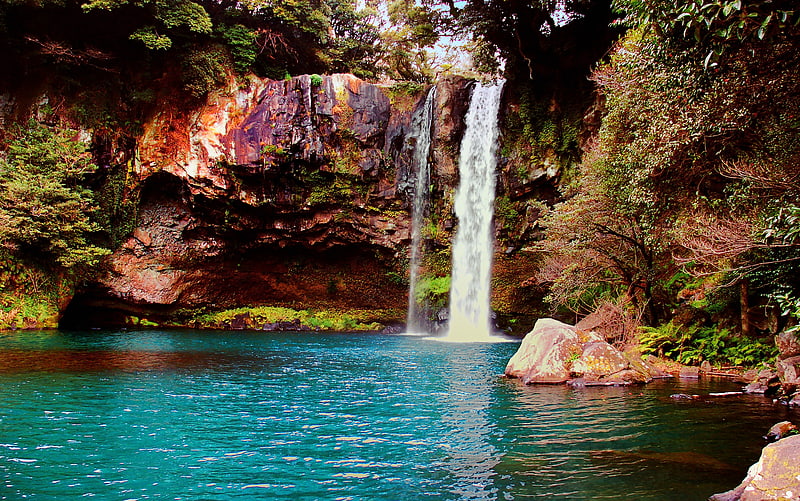
Also known as: 천지연폭포
Waterfall in South Korea. Cheonjiyeon Waterfall is a waterfall on Jeju Island, South Korea. Literally, the name Cheonjiyeon means sky connected with land. It is one of the main tourist attractions on Jeju-do. It is 22 m high and 12 m wide. Though water always falls in one particular area, depending on the amount of recent rain, the water may spread out. At the bottom of the waterfall is an artificial pond that is 20 m deep. Two small dams help keep the water at a specific level. Large volcanic rocks form landbridges that allow tourists to pose for photographs in front of the falls. These falls are characterized by its trachyte andesite rocks. The source of Cheonjiyeon Waterfall is a spring that comes out of the floor of the Somban Stream. The stream Yeonhee-chun is the source of the waterfall. The waterfall is one of the three famous waterfalls of Jeju, the other two being Cheonjeyeon Waterfall and Jeongbang Waterfall.
In order to reach the waterfall, visitors must walk on a landscaped trail. Near the beginning of the path is a traditional Korean raft called t'e-u (테우), symbolizing Korean culture. It is the most popular at night, because the falls are illuminated. At night, the "Hidden Face," a formation of rocks, may be visible with the night lights, and the falls are popular for lovers. The Cheonjiyeon Waterfall is also known for its diverse plant and animal life, as the path to the waterfall goes through a garden of subtropical plants. Migratory ducks, Elaeocarpus sylvestris var. ellipticus (Natural Monument no. 163), Psilotum nudum, and Castanopsis cuspidata var. sieboldii, Xylosma congestum, and Camellia are some examples of the flora and fauna around the falls. Just before reaching the falls on the path, one must cross a bridge from which a wide variety of koi fish can be seen below. Along the way are three piles of stacked or balanced rocks that are a common sight throughout the whole of South Korea. In olden days, a person would place a small stone under a larger stone and pray for the health and prosperity of their family. Its pond is known for being a habitat of the marbled eel (Anguilla marmorata), which is mainly active at night. Known as the Mutae (무태) eel, it is classified in Korea as Natural Monument no. 27.[1]
Jeongbang Waterfall
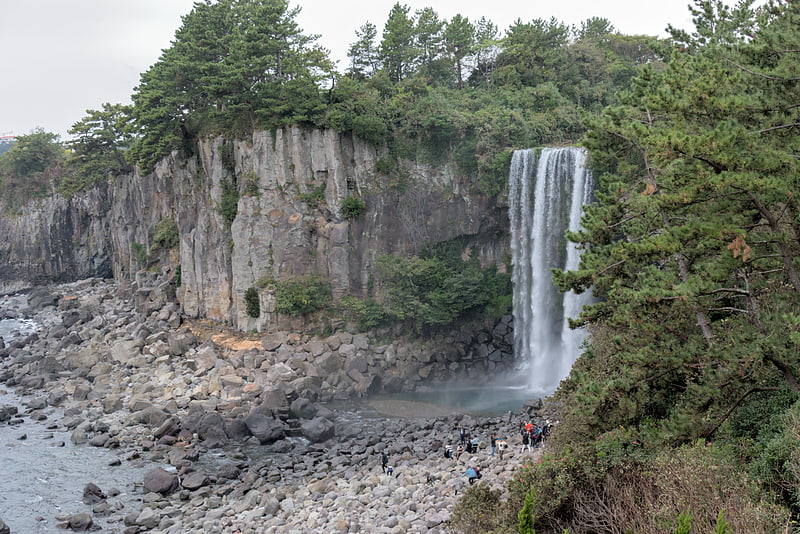
Also known as: 정방폭포
Cliffside waterfall next to the ocean. Jeongbang Waterfall is a famous waterfall on Jeju Island. The waterfall is 23 m high and is very close to the ocean. Depending on the level of recent rainfall, it can be up 8 m wide. The source of the waterfall is the stream Donghong-chun. Located near Seogwipo, Jeongbang Waterfall is a popular tourist attraction. It is considered Yeongjusipgeong, one of the ten greatest scenic wonders of Jeju.
Legend states that a holy dragon lived underneath it. It was said that the dragon's spirit is contained in the water which can cure diseases and bring rain during drought. Furthermore, a nearby small waterfall is said to resemble a servant waiting on a lord.
A legend states that Emperor Jin of China (259 BC - 210 BC) sent a servant, Seobul, to fetch the magical herbs of eternal youth from Mount Halla. Though he failed to find the herb, he encountered Jeongbang Falls on the way and he left his autograph, Seobul Gwaji (which literally means "Seobul was here"), on the cliff wall, where it no longer remains. An inscription on the wall of the waterfall saying "Seobulgwacha", refers to Seobul's journey. The waterfall is one of the three famous waterfalls of Jeju, along with Cheonjiyeon Waterfall and Cheonjeyeon Waterfall. A smaller waterfall, Sojeongbang Waterfall is 300 m to the east.
The waterfall is also known to be a location related to the Jeju uprising, where in 1948, six massacres were committed and the bodies were disposed of downstream over the watefall.[2]
Address: 칠십리로214번길 37, 697-835 서귀포시
Cheonjeyeon Waterfall

Also known as: 천제연폭포
Picturesque waterfall with 3 parts. Cheonjeyeon Waterfall is a three-tier waterfall located on Jeju Island. Cold water flows out of the ceiling of a cave to make the waterfall. Between the precipice of the waterfall and the lower clay layer, water springs out. In first cascade, the cliff is 22 m high and the water falls into Cheonjeyeon pond which is 21 m deep. From there, the water goes to the second waterfall and falls 30 m and continues to the third waterfall. Eventually, the water reaches the ocean. Cheonjeyeon means Pond of the Emperor of Heaven. According to Korean legend, seven nymphs would descend from the heavens at night and bathe in the waterfall's pond. The falls are a popular tourist attraction on Jeju-do.
The warm temperate forest around Cheonjeyeon Waterfall was designated Natural Monument No. 378 in 1993 because of the rare plants it contains and its value for scientific research. Rare plants such as the solipnan (솔잎난) plants or skeleton fork fern (Psilotum nudum) can be found around the falls in the crevices of rocks.
Since ancient times, it is thought that standing under the waterfall on the 15th day of the seventh lunar month can cure diseases by the eighth lunar month, though swimming is now prohibited. On the May of even-numbered years, the Chilseonyeo (Seven Nymphs) Festival is held at this location. The waterfall is one of the three famous waterfalls of Jeju, the other two being Cheonjiyeon Waterfall and Jeongbang Waterfall.
Above the falls is Seonimgyo Bridge, which symbolizes the legend of Cheonjeyeon.[3]
Address: 천제연로 132, 697-858 서귀포시
Yakcheonsa
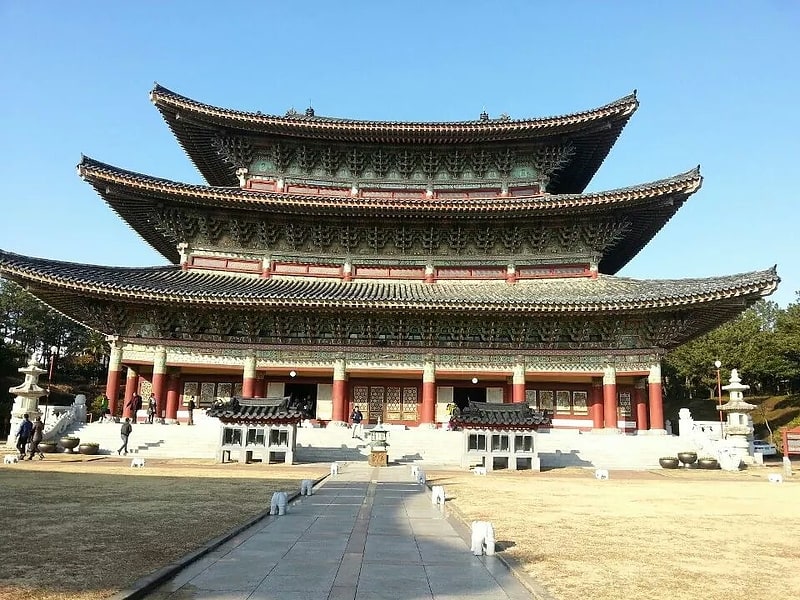
Also known as: 약천사
Temple in Seogwipo, South Korea. Yakcheonsa is a Buddhist temple of the Jogye Order on Jeju island, South Korea.[4]
Address: 1165 Daepo-dong, 697-320 Seogwipo
Yeomiji Botanical Garden
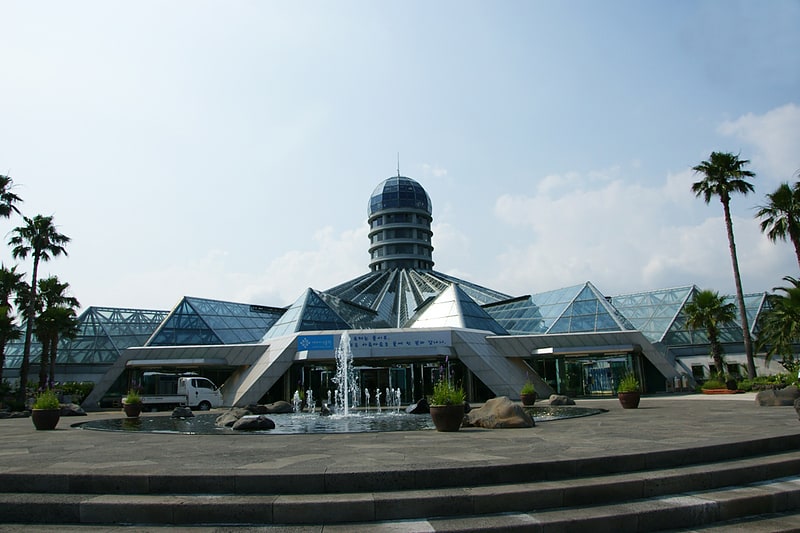
Also known as: 여미지식물원
Scenic indoor and outdoor botanical garden. Yeomiji Botanical Garden is botanical garden in Jungmun Tourism Complex, Seogwipo, Jeju-do, South Korea.
Inaugurated on October 12, 1989, Yeomiji used to be managed by Seoul Metropolitan Government. It was purchased by Buguk Development in 2005.
- Indoor gardens (over 1,300 species): under a massive sunflower-shaped structure, a 12,543 square meter greenhouse featuring 6 thematic gardens (aquatic, flower, mystery, cactus, jungle, tropical), and a seasonal display.
- Outdoor gardens (over 1,000 species): 4 cultural gardens (Korean, Japanese, French, Italian), and theme gardens (endangered species and native plants, Jeju native plants, hosta garden, Rhododendron garden, herb garden, bog garden, lawn garden, cycas, perennial border).
Address: 2920 Saekdal-dong, 697-130 Seogwipo
International Convention Center Jeju
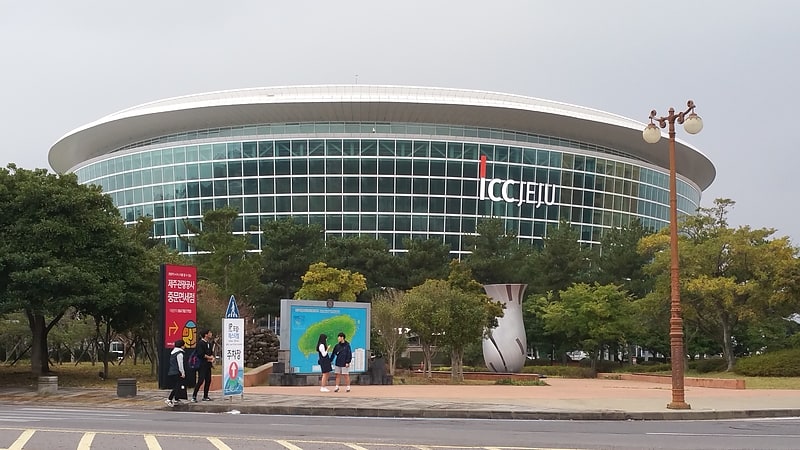
Also known as: 제주국제컨벤션센터
Convention center in Seogwipo, South Korea. International Convention Center Jeju opened in 2003 on Jeju Island, South Korea, in the Jungmun Resort near the city of Seogwipo. It began under private-public consortium ownership and is becoming fully publicly owned. It consists of a larger oval-shaped glass structure and a smaller round glass annex, and surrounding facilities. The largest hall accommodates 4,300 people, with various smaller halls and meeting rooms.
The building consists of a large elliptical fully glass-wall structure four floors above ground (and two below) connected to a smaller circular glass building housing restaurant and coffee shop, and is set on a cliff over the Pacific Ocean. The building houses the Jeju Convention Bureau.
In 2007 construction began on the adjoining 50,000 sq. meter lot to build a 600-room hotel-condominium to serve as ICC Jeju's "anchor hotel," scheduled to be completed in 2009.[6]
Address: 224, Jungmungwangwang-ro, 63547 Seogwipo
Segyejogabibagmulgwan/world seashell museum
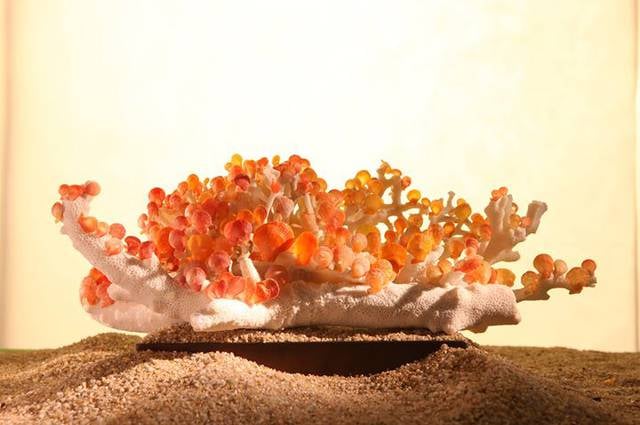
Museum, Specialty museum
Address: 557-1 Seohong-dong, 697-080 Seogwipo
Bonte museum
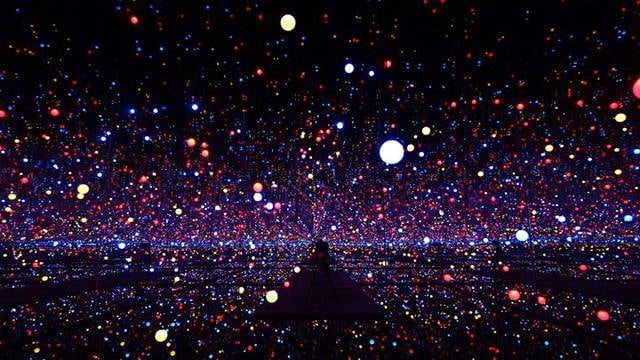
Museum, Art museum, Specialty museum, Art gallery, History museum, Shopping
Address: 380 Sangcheon-ri, Andeok-myeon, 699-926 Seogwipo
Oedolgae Rock
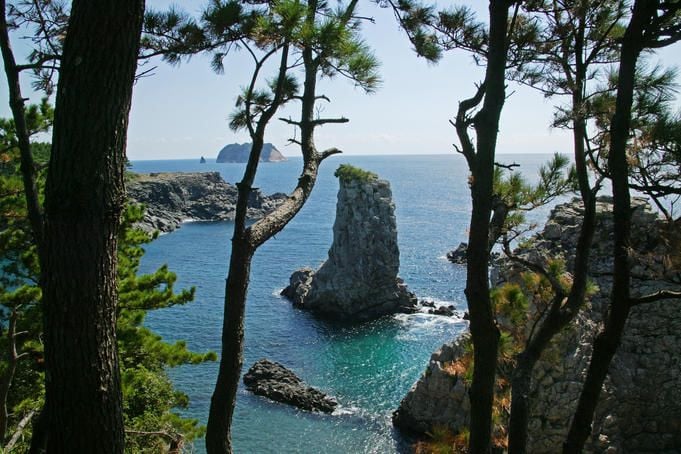
Relax in park